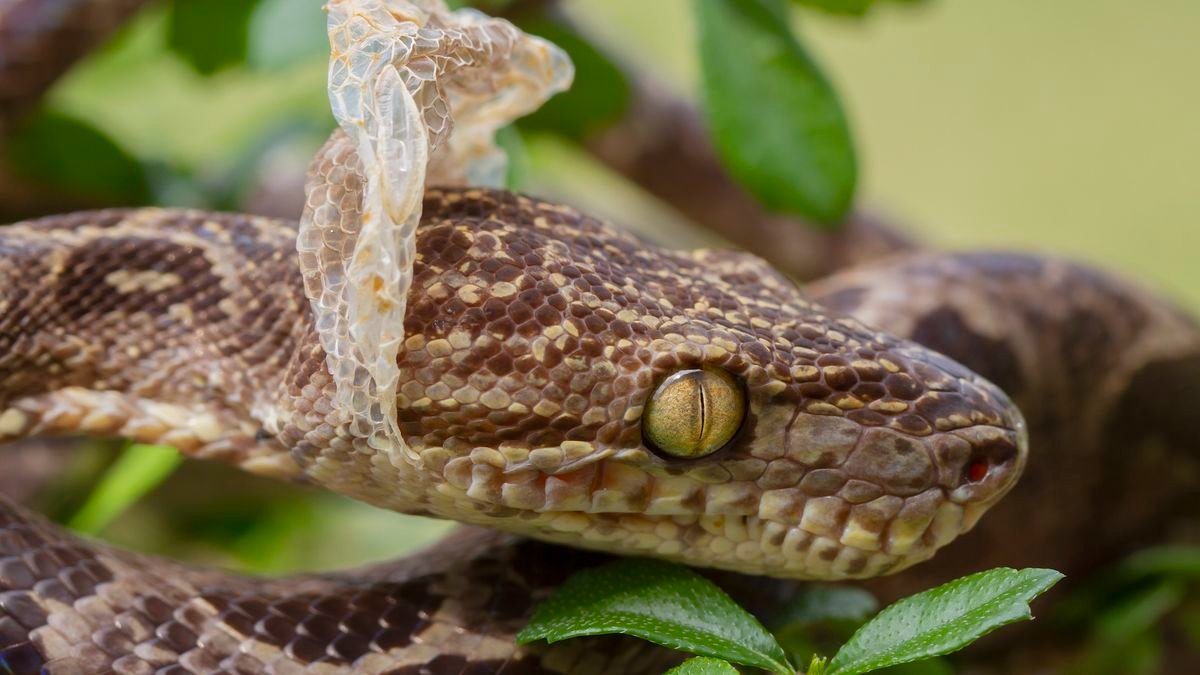Why Do Snakes Shed Their Skin? Understanding the Fascinating Process


Snakes are some of the most intriguing creatures in the animal kingdom, with their unique behaviors and fascinating biological processes. One of the most remarkable phenomena associated with snakes is their ability to shed their skin, a process known as ecdysis. If you’ve ever wondered why snakes shed their skin, you’re in for a treat. This natural process serves several essential functions in a snake’s life, from accommodating growth to keeping their skin free of parasites. Let’s dive into the reasons behind why and how snakes shed their skin.
What Is Ecdysis?
Ecdysis is the technical term for the process of shedding skin, a necessary biological function for many reptiles, including snakes. As snakes grow, they can’t simply expand their old skin like humans can. Instead, their skin is made up of keratin scales that don’t stretch to accommodate their growing bodies. Therefore, to make room for new, larger skin, snakes must periodically shed their old outer layer.
Key Reasons Why Snakes Shed Their Skin
1. Growth Accommodation
Snakes don’t grow in the same way that mammals or birds do. Their skin, which is made up of non-living keratin scales, cannot stretch as they increase in size. To accommodate their growth, snakes shed their old skin and form a new layer beneath. This process helps the snake grow larger and keeps the new skin flexible and fitted to their body size. In other words, shedding allows the snake to “outgrow” its skin and ensure that it fits its new size.
2. Parasite Removal
One of the most important reasons snakes shed their skin is to rid themselves of parasites. The old skin can sometimes harbor harmful external parasites like mites or ticks. When a snake sheds its skin, it effectively removes these unwanted guests and prevents any further health issues. This process helps the snake stay clean and healthy, allowing for better mobility and reducing the risk of infections.
3. Reproductive Preparation
Snakes often shed their skin around the time they are preparing to reproduce. This process may play a role in mating behaviors, as shedding allows snakes to present themselves as healthier and more vibrant. In some species, skin shedding is even linked to the fertility cycle, where shedding can help make room for successful egg development or improved mating readiness. After giving birth, some snakes may shed again as part of the reproductive cycle.
The Shedding Process
The process of skin shedding in snakes is both fascinating and meticulous. It begins with the formation of a new skin layer beneath the old one. This new skin is smooth, but the old skin remains firmly attached. To facilitate the shedding, the snake’s body secretes a fluid that helps loosen the old skin from the new layer.
Once the old skin is sufficiently loosened, the snake will seek out rough surfaces such as rocks, tree branches, or other natural features. It rubs against these surfaces to create a tear in the old skin, usually around the mouth or eye area. Once the tear is created, the snake begins to wriggle and slither out of its old skin, often leaving behind a nearly complete, intact replica of itself.
The entire shedding process can take several days, and snakes are often less active during this time. The skin that is shed is typically translucent, and you might even see the snake’s eyes become cloudy just before the shedding occurs. This is because the new skin layer has not yet fully developed its pigmentation.
How Often Do Snakes Shed Their Skin?
Snakes shed their skin at different rates depending on factors such as their age, size, and environment. Younger snakes tend to shed more frequently because they grow at a faster rate. In contrast, adult snakes may shed less often but still shed their skin multiple times per year. Environmental factors, such as humidity, temperature, and overall health, can also affect the shedding frequency.
Conclusion
Shedding their skin is a crucial process for snakes. It allows them to grow, stay healthy by removing parasites, and even prepare for reproduction. This fascinating process, known as ecdysis, is a natural part of the snake’s life cycle, and by understanding it, we can appreciate the complexities of reptilian biology. Whether you’re a snake enthusiast or simply curious about these remarkable creatures, knowing why and how they shed their skin provides insight into their survival and unique behaviors.
Internal Links:
- Understanding Ecdysis: The Science of Skin Shedding in Reptiles
- The Role of Keratin in Reptile Skin Health
- Parasite Management in Captive Snakes: Best Practices


